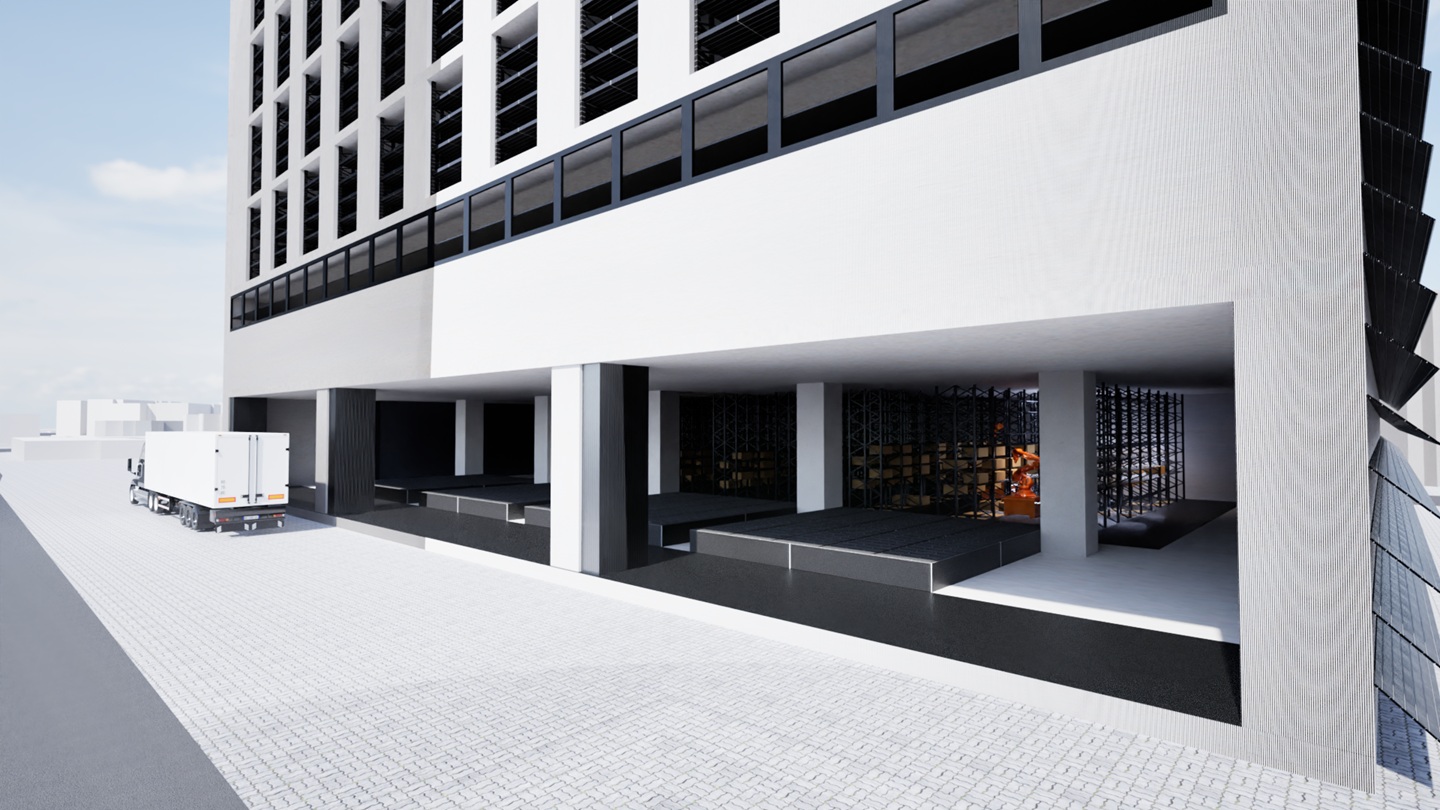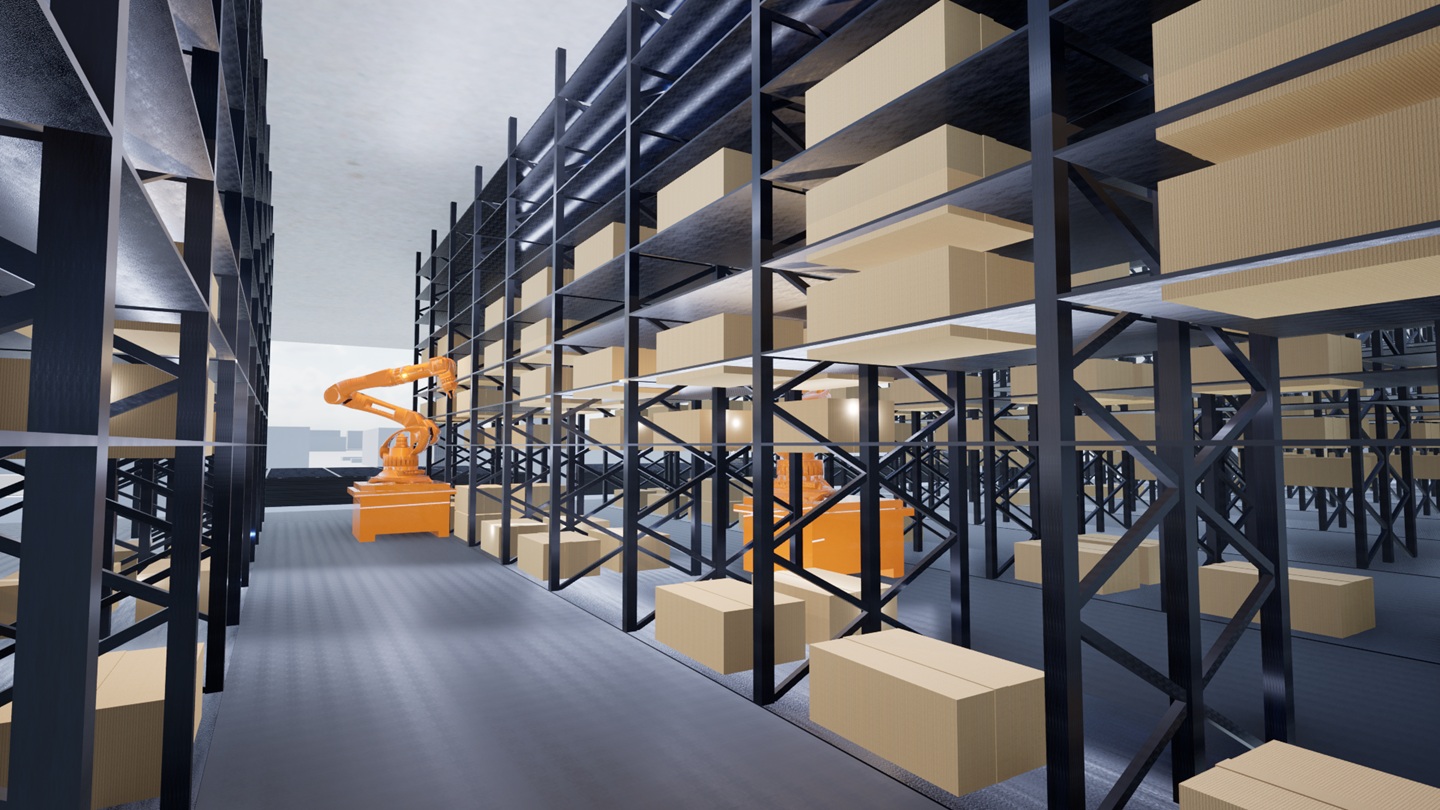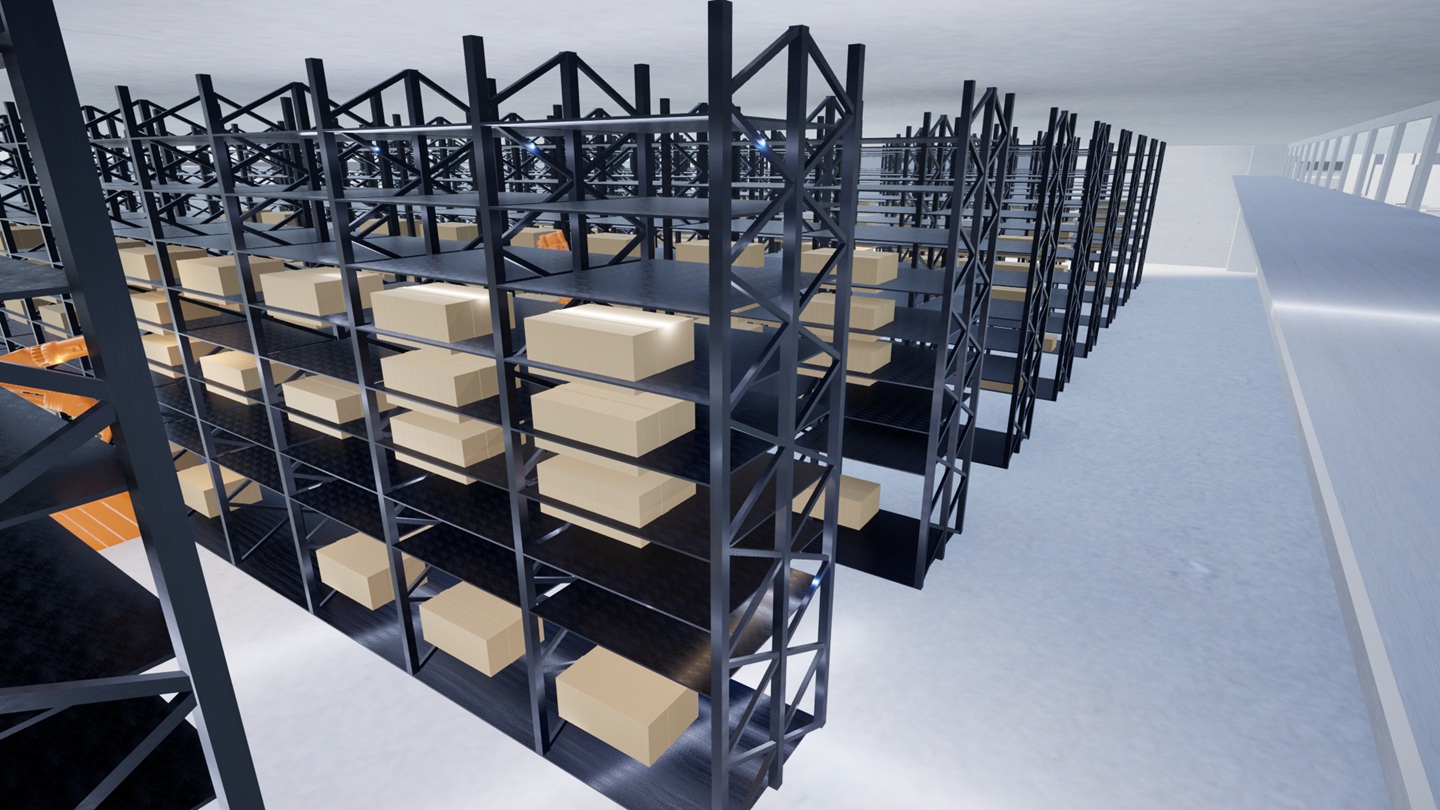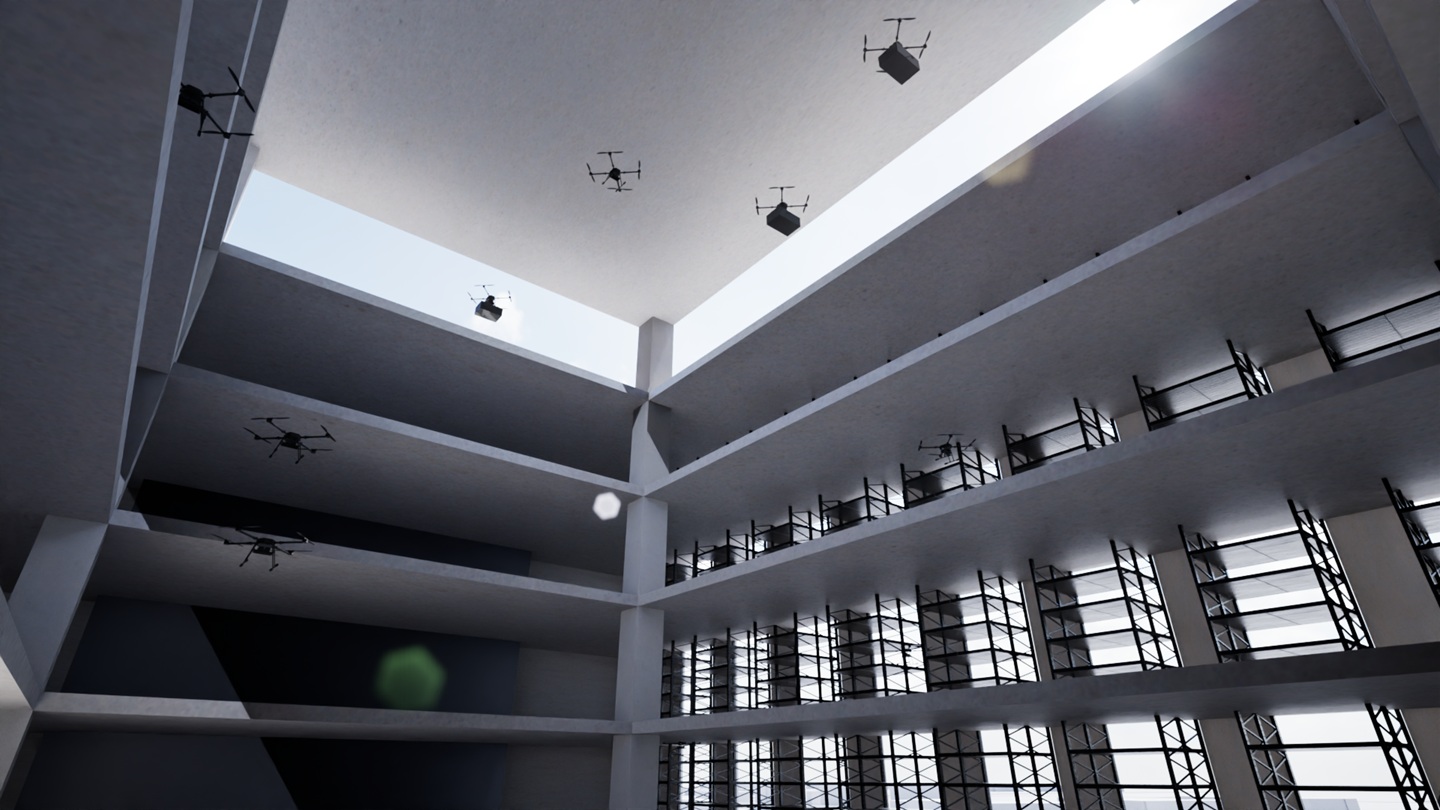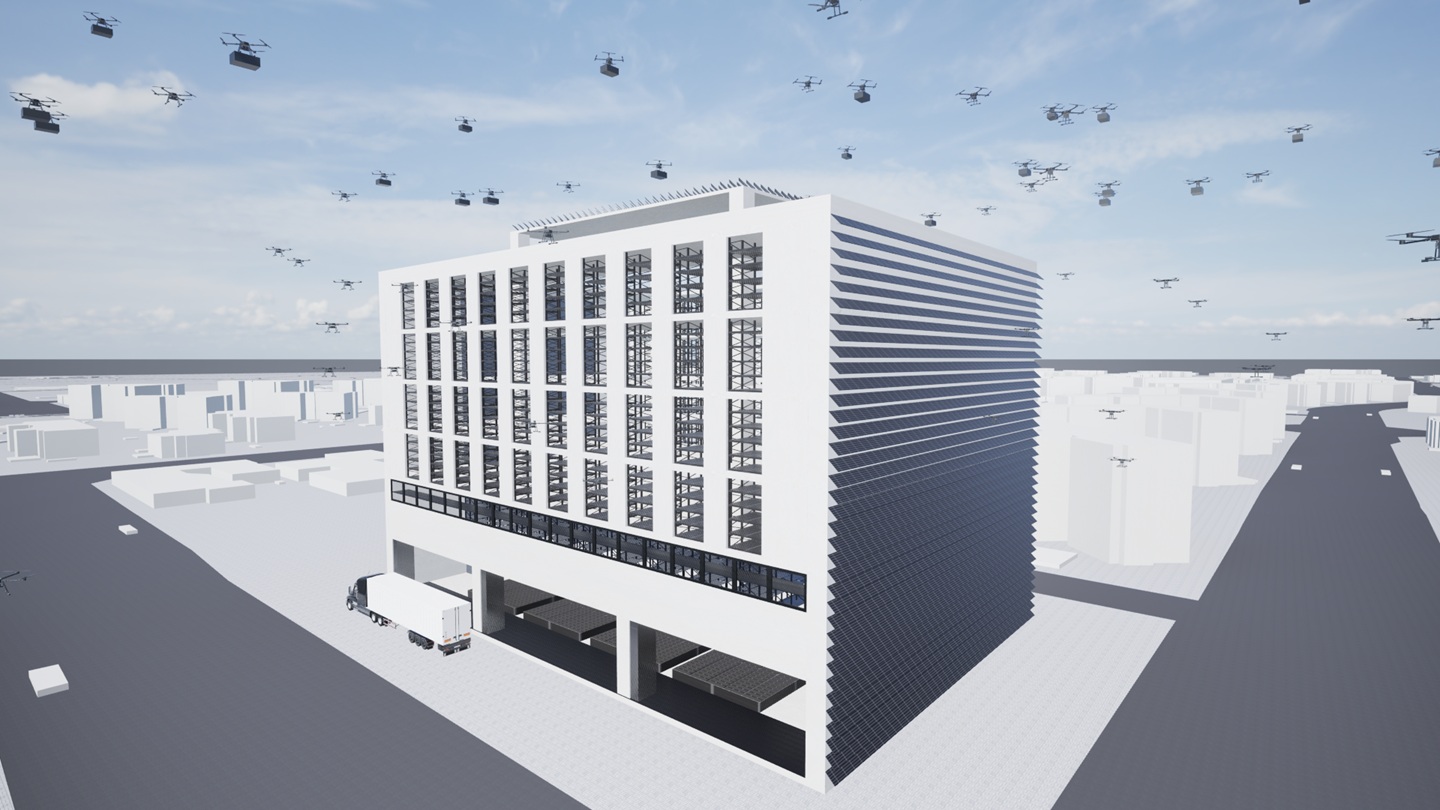졸업시켜듀오 (박동재, 이현기) _ 위례 신도시 드론 물류 센터
오늘날 물류 산업은 전자상거래의 급성장과 함께 경제의 핵심 인프라로 자리잡았지만, 급증하는 수요에 비해 기존 택배 배송 시스템은 구조적으로 매우 비효율적인 방식에 머물러 있다. 현재 대부분의 물류창고는 도심 외곽에 위치하고 있으며, 최종 배송 단계인 라스트마일은 여전히 내연기관 차량 중심으로 이루어진다. 이로 인해 교통 혼잡, 탄소 배출, 인력 수급 불균형, 그리고 낮은 물류 수익 구조 등 다양한 한계가 누적되고 있다. 특히 대도시와 신도시처럼 고밀도 주거 공간에서는 유연하고 지속 가능한 배송 시스템을 구현하기 더욱 어려운 실정이다.
우리는 이러한 문제의 대안으로, 신도시 내부에 드론을 기반으로 한 물류배송 시스템을 시범적으로 구축하고자 하였다. 드론 배송은 기술적·비용적·법적 제약이 여전히 존재하지만, 본 프로젝트의 핵심 목표는 단기적 수익성 확보가 아닌, 스마트 물류 시스템의 실증과 향후 확산 가능성에 대한 다각도의 검토다. 초기에는 특정 지역(신도시)에 한정된 형태로 시작하지만, 궁극적으로는 전국적인 친환경 도시 물류 체계로 확장 가능한 실험적 모델로서의 가능성을 탐색하고자 한다.
이번 설계는 도심 내 스마트, 첨단, 무인 물류센터라는 조건과 친환경적 건물이라는 조건을 동시에 달성하는 것을 목표로 삼았다. 이를 위해 옥상과 벽체에 설치된 트래킹형 태양광 패널을 통한 발전량 극대화, 그리고 고창과 광선반을 활용한 실내 자연채광의 조도 및 균제도 확보에 주력했다. 드론 정비와 픽킹·라벨 작업이 이뤄지는 자동화 창고의 특성을 고려하여,내부의 작업 환경이 목표로 한 조도와 균제도 기준을 충족하도록 GrassHopper와 ClimateStudio를 활용한 수치 시뮬레이션 기반 설계를 수행하였다.
우리가 설계한 드론 물류배송센터는 단순한 기술 시연을 넘어, 도시 물류 인프라의 미래상과 친환경 스마트 물류 체계의 방향성을 제안하는 실험적 플랫폼이다. 본 프로젝트는 신도시라는 구체적 공간을 기반으로 기술적, 환경적, 공간적 변수들을 통합 설계하고 이를 수치로 검증함으로써, 향후 도시 전역으로 확산 가능한 지속가능한 물류 인프라 구축의 첫걸음을 제시한다.
Today, the logistics industry has become a key pillar of the economy, fueled by the rapid growth of e-commerce. However, despite rising demand, conventional last-mile delivery systems remain structurally inefficient. Most logistics warehouses are located on city outskirts, while the final delivery stage still relies heavily on internal combustion vehicles. This leads to persistent issues such as traffic congestion, carbon emissions, labor shortages, and low profitability. In densely populated areas like major cities and newly developed towns, the challenge of implementing flexible and sustainable delivery systems becomes even more pronounced.
As a response to these challenges, we proposed a pilot project to establish a drone-based logistics delivery system within a new urban development. While drone logistics still faces technological, financial, and legal constraints, the core objective of this project is not short-term profitability but rather the demonstration of a smart logistics system and the exploration of its scalability. Initially limited to a specific area, the project ultimately envisions an experimental model that could evolve into a nationwide, eco-friendly urban logistics infrastructure.
This design aims to achieve two key goals simultaneously: creating a smart, automated urban logistics hub and ensuring environmentally sustainable building performance. To this end, the facility incorporates dual-axis tracking photovoltaic panels on the rooftop and walls to maximize solar energy generation, while high windows and light shelves are employed to enhance natural daylight penetration and ensure uniform interior illumination. Simulation-based design, using tools such as Grasshopper and ClimateStudio, was conducted to ensure that the lighting levels and uniformity within the automated warehouse—where drone maintenance, picking, and labeling operations take place—meet the required standards.
More than a technological showcase, this drone logistics hub serves as a conceptual platform proposing the future of urban logistics infrastructure. Grounded in the real-world setting of a newly developed city, the project integrates technological, environmental, and spatial variables through a comprehensive and data-driven approach. In doing so, it presents a scalable blueprint for the development of sustainable urban logistics systems.
